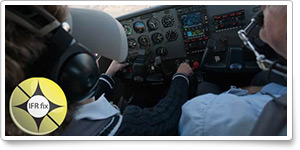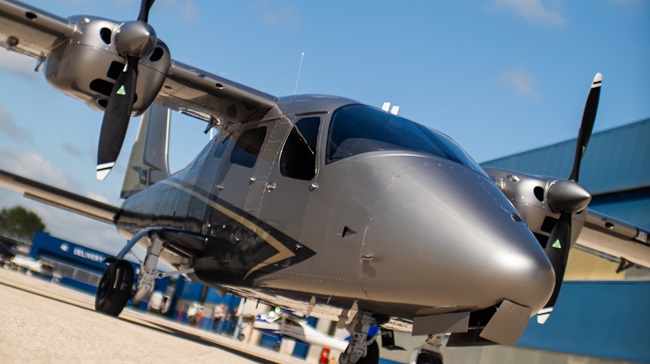| ||||||
| A tailwind on base |
| |||||
Training TipsA tailwind on base Sure enough, immediately after takeoff you sense the crosswind's effect on your track, so you set up a crab angle to track the extended runway centerline in the climb. Once you get established on the downwind leg at pattern altitude, it will be necessary to set up a crab angle there too. There's an even more important element of this common scenario to consider: Will today's crosswind give you a tailwind or a headwind on the base leg? Knowing which to expect is essential for avoiding overshooting the turn to final—a problem that leads to many go-arounds and occasional accidents resulting from steep or uncoordinated maneuvering by pilots too stubborn—or too rattled—to abandon the approach and try again. Suppose you are flying a left downwind, crabbed a few degrees to the right to prevent your aircraft from drifting closer to the runway. That wind condition promises a tailwind—and an increase in your groundspeed—starting when you turn base. If you flew your downwind leg too close to the runway, now you're set up to overshoot the turn to final. On the other hand, if your crab angle on that downwind must be to the left (that is, a few degrees toward the runway), you can expect a headwind, and reduced groundspeed, on base. At a tower-controlled airport it may be possible to arrange to fly both left- and right-hand traffic patterns so that you can experience both effects during your practice session. Considering that in an eight-knot direct crosswind, the difference in your groundspeed will be 16 knots between a left base leg and a right base leg flown at the same indicated airspeed, it's an eye-opening exercise. Any time you have to land with a crosswind, the other pattern legs will need adjustment as well. If that means that you can expect a tailwind on base, fly a traffic pattern that gives you enough room, and enough time, to make a smooth, accurate turn onto final approach. A review of the Air Safety Institute's Mastering Takeoffs and Landings Safety Advisor will help broaden your understanding even further. Flight Training NewsFlight school victimized by renter's smuggling arrestA Southern California flight school owner faces the loss of his two-year-old business, along with the Cessna 172 he rented to a well-known customer. On Jan. 20, border patrol agents arrested a man on suspicion of transporting illegal immigrants using the rented Skyhawk. The aircraft was seized, and the flight school owner doesn't know if he'll ever see it again. Read more >> Moving beyond the private certificateReceiving your inital pilot certificate is just the start of your aviation training. Part of learning to fly faster and bigger aircraft involves learning the various systems of those aircraft. Retractable landing gear, oxygen systems, and turbocharged engines are all things you may run across as you transition to more complex airplanes. Find out how much you know about these components in the latest safety quiz from the Air Safety Institute, underwritten by the AOPA Insurance Agency. Take the quiz >> Showalter waives fees for studentsWant to fly to a busy, towered airport but afraid of the high fees? Now you and your instructor can visit Showalter Flying Service at Orlando Executive Airport and pay no facility or handling fees. Chairman Bob Showalter says the purpose is to support students and get them experience at larger airports. He is encouraging other FBO operators to do the same. Things you never want to see in DCThe F-16 suddenly appeared off the left wing of the GippsAero G-8 Airvan. It wagged its wings, and its engine, in afterburner, shook the sky like an aerial earthquake. It's a sight you don't want to see, but general aviation pilots should know how to recognize, and respond to, instructions from a U.S. military or law enforcement aircraft if they ever find themselves with an unwanted escort. AOPA Pilot Senior Editor Dave Hirschman came along for a practice intercept. Read more and watch clips from the intercept >> Training ResourcesWhether you just started flight training or passed the private pilot checkride, you may have questions about the practical aspects of flying VFR at night. As serene as the night sky may be, sparse ground lights or a pitch-dark night may prove challenging: It could be difficult to distinguish landmarks, terrain, and weather. Night VFR flight planning takes on another dimension well beyond your usual VFR daytime flight planning. Bolster your knowledge and fly prepared with the Air Safety Institute's Night VFR Flight Safety Spotlight.
Did you know that student pilots who join AOPA are three times more likely to complete their flight training? Membership includes unlimited access to aviation information by phone (800/USA-AOPA, weekdays from 8:30 a.m. to 6 p.m. Eastern time) or from Flight Training Online or AOPA Online. If you're not already a member, join today and get the pilot’s edge. Login information is available online. LSA update from Sebring Career PilotAmerican outlines restructuring planAmerican Airlines on Feb. 1 outlined a business plan to transform the airline and restore it to industry leadership, profitability, and growth. The plan targets an annual financial improvement of more than $3 billion by 2017: $2 billion in cost savings—including average annual employee-related savings of $1.25 billion—and $1 billion in revenue enhancements. The carrier will overhaul its fleet, reducing fuel, maintenance, and financing costs. All employee groups, including management, must reduce their total costs by 20 percent to save an average of $1.25 billion annually from 2012 through 2017; the workforce will be reduced by about 13,000 employees. FMLA extended to cover flight crewsNearly two decades after the Family Medical Leave Act (FMLA) was signed into law, its coverage has been extended to air carrier flight crews. Secretary of Labor Hilda Solis on Jan. 30 announced the implementation of the Airline Flight Crew Family and Medical Leave Act. The FMLA requires most employers to provide job-protected unpaid leave to employees who have worked 60 percent of a full-time schedule over the course of a year. However, the courts and federal agencies narrowly defined the "full time schedule" as that of a traditional 40-hour work week, excluding employees whose schedules do not fall within the traditional 9-to-5 workday. The Airline Flight Crew FMLA corrects this misinterpretation of the original legislation. Plane SpotterGlasair: Experimental speedster Training ProductsDRE 8001 ANR headset with BluetoothThe DRE 8001 active noise reduction (ANR) headset is now available with Bluetooth capability. Sold by Headsets Inc., the unit integrates a Lynx Bluetooth audio controller into the headset. The Lynx unit features rechargeable lithium-ion batteries that can be recharged by plugging into the included charger, plugging into a computer USB port with the included cable, or from aircraft power via the included cigarette lighter adaptor. The battery will power the unit for 12 to 15 hours. The DRE 8001 with Lynx Bluetooth interface is available at an introductory price of $599 through June 30. See the website.
Note: Products listed have not been evaluated by ePilot editors unless otherwise noted. AOPA assumes no responsibility for products or services listed or for claims or actions by manufacturers or vendors. Member BenefitsBefore you see the AME …There are numerous steps you can take to make your appointment with the aviation medical examiner go more smoothly, according to Dr. Jonathan Sackier. You can start with something as simple as scheduling your appointment early in the month that it's due to give yourself some time in the event something needs to be corrected. Read more >> Treat yourself this Valentine's Day at the AOPA StoreThe AOPA Store is chock-full of items that any pilot or aircraft owner would want. These are products that have been screened by pilots, tested by pilots, and approved by pilots to ensure that the AOPA logo is placed only on the highest-quality merchandise. Stroll the virtual aisles of the AOPA Store and you'll find shirts, jackets, hats, wallets, watches, books, DVDs, training materials, and much more. Every purchase you make at the AOPA Store will help maintain the freedom, safety, and affordability of general aviation. BlogsYour first trainerIt might have a face only a pilot could love, but your first trainer will hold a place in your heart that no other airplane can occupy. Flight Training Technical Editor Jill Tallman got a change to go back to those days when she was first learning to fly a sporty-looking little low-wing airplane named for a Caribbean island. Read about it in the Flight Training blog. S-turns on the slopesHave you ever encountered an everyday activity that mirrored something you do in aviation? For AOPA Online Managing Editor Alyssa Miller, a lesson on the ski slopes brought back some memories of doing S-turns in primary training. Read more in the Reporting Points blog. AOPA Career OpportunitiesEver dream of turning your passion for aviation into a career? We’re looking for an online product manager, marketing specialist–products, aviation education program developer, accounting manager, chief flight instructor, manager of flight training programs, and associate editor–Web/ ePilot. To learn more about other AOPA career opportunities, visit AOPA Online. Community
AVIATION EVENTS & WEATHER
| ||||||||||||||||||||||||||||||||||||||




 It's a good day for some practice in the traffic pattern. The wind is blowing, but well within your logbook limitations, and it's a direct crosswind—a tantalizing opportunity to nail a few landings using the techniques you have learned.
It's a good day for some practice in the traffic pattern. The wind is blowing, but well within your logbook limitations, and it's a direct crosswind—a tantalizing opportunity to nail a few landings using the techniques you have learned.





